|
As a homeowner in the United States or Canada, running consistent tests in your house for radon gas should be at the top of your maintenance routine. After smoking, radon exposure is the second leading cause of lung cancer in America. Moreover, it has been found that one in every 15 homes in the United States have high radon levels. Luckily, most of these tests can be done without professional help using a wide range of radon detectors available today. Here are some of the best picks.
Among the listed radon detectors, the AirThings Corentium remains the overall best home radon detector based on user reviews. Radon Eye RD200Produced by Radon FTLab, the Radon Eye RD200 detector gives its results in minutes. Radon Eye guarantees that you will get a very reliable result in 60 minutes. This detector uses Radon Eye’s proprietary detection technology which gives 30 counts per hour per pCi/L. You can easily connect your Android/iOS device to the Radon Eye RD200 detector where your home test results will be visible. These results get updated every 10 minutes and you get an option to track monthly/weekly ratings. Key Features of the Radon Eye RD200
AirThings 2960 View PlusManufactured by AirThings, the AirThings 2960 View Plus gives an accurate radon measurement (+- 10%) at 5 pCi/L after 7 days. It uses a USB C cable, an air quality monitor, and 6 AA batteries for its operation. The battery cell is made of alkaline material and has an average battery life of 2 years. The AirThings 2960 View Plus also detects air pollution, temperature,CO2 levels, humidity, airborne chemicals, air pressure, and radon in its vicinity. The Wi-Fi connection lets the user synchronize test results easily with your mobile device. Test results can be viewed via their online dashboard as well. Key Features of the AirThings 2960 View Plus
AirThings CorentiumAlso developed by AirThings, the AirThings Corentium was the first battery-powered digital radon detector. It has a visual alarm indicator that warms when the radon level is increasing. The accuracy in test results improves after 7 days with an error margin 10% and 5% within 2 months. It uses 3 AAA batteries for its operation. The design of the internal monitor is taken from an advanced high-contrast technology normally seen in commercial detectors. The system is so reliable and robust that AirThings ships it with a ‘no-calibration required mark’ valid up to ten years. Key Features of the AirThings Corentium
Buyer's Guide For Radon DetectorsHere are some of the most important features to watch out for when buying radon detectors.
Frequently Asked QuestionsHere are some frequently asked questions about radon detectors. How Do Digital Radon Test Detectors Work?The radon test detectors work by tracking or counting the quantity of radon particles in the air. Digital radon test detectors make use of air sensors to identify alpha particles. They then count the number of these particles per hour, followed by determining the radon level. Where Can a Radon Detector be Placed?For the radon detector to work effectively, it should be put on the lowest point of elevation. Place it in a common room where you spend most of your time, such as the living room. ConclusionThe fact that we humans cannot detect radon gas does not mean it does not affect us. Prolonged exposure to radon gas increases an individual's chances of having lung cancer by 50%.
The above-listed radon monitors detectors are some of the best with an assurance of accurate test results; however, if you want the most accurate radon measurement possible, order one of our radon test kits here. Thanks for reading!
0 Comments
Radon gas occurs naturally in soil. Radon can enter any home, regardless of how old your building is, its structural integrity, location (on the ground, in a crawlspace, or a cellar), or whether or not it is sealed. Radon levels are high in houses of all shapes and sizes, and consistent worldwide. The only way to determine the radon level in your home is through testing. This can be done by yourself using a DIY testing kit or by consulting experts. How Does Radon Gas Enter A House?Radon is formed when radioactive elements such as radium and radium decay. It can enter your home through various channels, including cracks and wall gaps. During the construction of houses, the foundation often comes in contact with this radioactive element, which, when it decays, finds its way into the building through holes in the foundation. Radon gas can also enter your home if your basement is in contact with rocks and natural stones such as granite containing this radioactive element. This dangerous gas can also be found in well water because wells sourced from an aquifer are in contact with the soil and rocks where Radon gas is present. When such water is used in the home for washing, bathing, and other activities, it builds up the Radon gas concentration in your home. Combating Radon Gas In HousesThe Department of Housing and Urban Development suggests taking the following extra steps to protect yourself against a radon problem and reduce the risk of developing lung cancer due to excessive radon gas levels in your house:
Radon Testing At HomeThe only sure way to know if you and your family are at risk of radon exposure is to have your home tested. To reduce the risk of radon problems, you can test for and reduce elevated radon levels by doing the following: Buying A Radon Testing KitYou can test your home using a DIY Radon Test Kit or hire radon reduction, assessment, and mitigation services to do the testing for you (This may cost you more, but radon mitigation is the best way to combat radon). Putting Your House Or Workplace To The Test It shouldn't take you too long to carry out the test, and it's inexpensive and straightforward. It entails opening a box and placing a small measuring instrument in a room for a specified amount of time. Short-term testing could take anywhere from a few days to several weeks. Long-term testing could take up to 90 days. The longer the test takes, the more relevant the results are to your environment and way of life. Sending The Radon Detection Kit To The Right SourcesFollow the testing kit package instructions to determine where to submit the device for results. What Effects Does Radon Exposure Have On Health?According to the EPA, in the United States, radon is the 2nd leading cause of lung disease. Many homes have high levels of radon, which may increase the risk of cancer and cardiovascular problems. Radonite enters the lungs whenever anyone breathes in radon. Radon and its decay products emit radiation in the form of beta and gamma rays. When radioactive compounds in the body emit alpha particles, they may be hazardous. Alpha particles could harm already vulnerable lung cells, increasing the likelihood of lung cancer. Important Things To NoteRadon Is Not Hazardous Outside, But It Is Very Poisonous When Enclosed Or InsideRadon concentration is often higher inside houses than outdoors because there is less indoor air and less room for radon gas to scatter and escape. Although radon exposure may occur in any kind of structure, Radon levels are often higher in cellars, vaults, and living areas in direct contact with the soil, Homes with good insulation and tight seals are more prone to accumulating radon to dangerous levels. Radon Gas Traces May Be Found In Springs, Wells, And Boreholes That Provide Groundwater Radon exposure may occur through the consumption of polluted water, but inhaling radon is usually more dangerous. It is more common to find elevated radon levels in groundwater such as springs as opposed to surface water such as lakes and streams. Radon levels in groundwater may be higher in homes that use that water source than in water that has been processed at a treatment plant. Frequently Asked QuestionsCan I Test My House For Radon?Yes. If you live in a place where radon levels are high, you need to have your home tested. The EPA believes that 6 million households in the United States now have hazardous radon levels. You can test for radon by employing an expert or purchasing a do-it-yourself test kit from a reliable radon test kit shop. Most radon gas testing kits include two-day or ninety-day tests that must be returned to the manufacturer for results. Where Does Most Of The Radon In Our Homes Come From? Radon may enter a building mostly through the earth or through cracks, construction joints, and openings. Radon gases are produced by soils and minerals. Excess radon may enter your house through water, building materials, and gas sources. What Is The Impact Of Radon On The Skin?Continuous skin exposure to high radon levels can lead to skin cancer. Radon emits carcinogenic radiation. Although this substance is neither invisible nor colorless, it might create issues for homeowners. Radon is among the leading cause of lung cancer in the United States and Canada. It may be visible at ocean level once it has been extracted from the soil. At low quantities, it readily evaporates outside and is typically not dangerous. How Frequently Should My House Be Tested? Environmental agencies recommend getting a radon test done before purchasing a property, after significant renovations, after a reduction or mitigation system has been put in place, and every two years after that. Final ThoughtsGiven the numerous ways this radioactive gas can enter your homes, such as leaks and cracks, Radon gas exposure should be taken seriously.
You shouldn’t wait until things are critical before conducting a test and taking precautions to reduce this threat to a safe level. According to the American Cancer Society, long-term exposure can damage lung tissue, increase the risk of developing lung cancer, and cause other health effects. With the option of a DIY Testing Kit, it is now simple to carry out this process and protect your family and loved ones. As you may or may not know by now, radon is a radioactive element derived from uranium, thorium, and other radioactive elements that decay in soil, rocks, and groundwater. Radon is a potentially toxic gas known for almost two centuries. It is an invisible, colorless, and odorless gas. Because of these features, radon cannot be detected using only human senses. The main attribute that has helped radon evade human research for many years is its invisibility. Since we tend to believe what we see and throw suspicion to what we can't see, the awareness around radon gas is slow to spread. The dangerous thing about radon is that it emits radiation in alpha particles that are potentially harmful to human health. What is more damaging is that after its alpha emission, it gets converted into certain daughter elements, which continue to release radiation in the lungs for decades. This article mainly focuses on the invisible story of radon and how this invisible gas is a potential threat to human health. Radon: The Leading Cause of Lung CancerRadon is one of the most extensively investigated human lung carcinogens. It has been known for several years as the potential cause of lung cancer among miners. However, radon does not remain confined to mines. Research also indicates that the number of cases of lung cancer due to residential exposure to radon ranges from 3,000 to 33,000, making it the second cause of lung cancer after cigarette smoking. Apart from lung cancer, radon exposure is also associated with other malignancies such as leukemia. According to the health authority, radon exposure is a category one cause of lung cancer. As other studies have shown, radon exposure is the second leading cause of death in patients with lung cancer. About 10 to 40 thousand Canadians succumb to lung cancer due to radon exposure every year. A statistical report also shows a significant rise in lung cancer cases, mainly due to the exposure of contaminants including radon, asbestos, and heavy metals. Pathogenesis of Lung Cancer After Radon ExposureThis story begins in an environment of high radon concentration. Whenever someone inhales air in such an environment, radon becomes trapped in the lungs. Radon disintegrates into its daughter radioactive elements in the lungs by releasing highly ionizing radiation (alpha particles). This radiation produces oxygen free radicals that damage the core of life – DNA (genetic material carrying complete life information)—the damaged DNA results in the development of mutations that are the primary setting for cancer. However, cancer takes decades to develop. In addition, other changes have been noticed in the lungs of patients who have only years of history of radon exposure. In these patients, the daughter elements of radon keep on emitting radiation in the lungs, resulting in the formation of fibrosis within the tissues. This fibrosis is the leading cause of restrictive lung diseases characterized by difficult inspiration. Signs & Symptoms of Radon ExposureAs you can't see, feel, or smell radon, you do not know when you are inhaling radon unless some signs or symptoms appear. Hence, it is pretty important to look for the early signs and symptoms of radon poisoning because if they are left untreated, they can lead to the development of lung cancer. The classical sign of radon poisoning is a persistent cough due to respiratory distress. Other pulmonary (related to lung) symptoms include recurrent attacks of bronchitis or pneumonia, coughing up blood, chest pain, wheezing, and hoarseness of voice. Some patients also report weight loss, fatigue, and loss of appetite. Whenever such symptoms arise, you must get yourself a thorough medical examination. Radon: Equally Disastrous to Smokers and Non-Smokers?A pronounced study clearly states the differential effects of radon exposure among smokers and non-smokers. According to this study, 260 out of 1000 smokers will develop lung cancer if exposed to 20 pCi/L of radon during their lifetime. Similarly, but not as bad, 36 individuals will develop lung cancer in every 1000 non-smokers. It is clear from this study that regardless of the potentially disastrous synergistic effect of smoking and radon exposure, radon exposure is more than enough to cause lung cancer. That’s why it is known as the element of risk. Every year, about 21000 deaths occur due to radon exposure, and only 2900 of those are non-smokers. How Damaging is Radon Exposure in Indoor Environments?Radon is an invisible gas that accumulates in closed buildings. More specifically, buildings with poor ventilation provide a more favorable environment for the dramatic accumulation of radon. Once it becomes concentrated within a confined area, it creates a lung cancer inducing situation similar to that which was observed in miners. Therefore, the most favorable radon concentration locations are the buildings' basements. As proven from various research studies, radon is a carcinogen found in homes, offices, warehouses, mines, etc. Therefore, all those who have several years of indoor radiation exposure due to radon are at risk of developing cancer and other lung disorders. Environmental Factors Influencing Indoor Radon ConcentrationSignificant data demonstrate the effect of environmental factors on radiation exposure by radon in indoor environments, including homes, schools, offices, and other buildings. One of the particular factors is the outdoor temperature. It has been observed that the indoor radon concentration is significantly higher in winter-autumn than in spring-summer. This detailed analysis further demonstrates that the indoor concentration of radon is inversely related to the indoor humidity, outdoor wind speed, and outdoor dew point temperature. It concludes that whenever indoor humidity is higher, there are fewer chances for the radon to accumulate in that area. In addition, rain has been observed to increase the radon concentration indoors. Indoor Sources of RadonThe primary sources of indoor radon includes soil gas, building materials, and tap water. Soil gas infiltration is by far the major contributor to indoor radon concentration. Here arises a question - How can we determine the points of entry for soil gas? The answer lies in the facts that are discussed later. Among soil particles, specific tiny spaces are filled with water or air in the ground. The gases that are occupying these spaces are collectively termed soil gas. Soil gas is composed of nitrogen, oxygen, and carbon dioxide. It also contains additional gases like nitric oxide, methane, and ammonia. Building materials like brick, marble, and granite have a basal level of radioactivity due to some radioactive minerals. They are also likely to possess radon in significant amounts, leading to a higher level of radiation. Drinking water is only a minor source of radon. Due to drinking contaminated water, radiation exposure is only associated with a negligible risk of stomach cancer and other gastrointestinal malignancies. Preventive Measures Against Radon ExposurePrimary health care providers must understand the role of radon in causing lung cancer and what precautions should be taken by the general public to avoid undesirable outcomes. These actions begin with getting your house tested for radon exposure. If you are following the E.P.A. radon exposure guideline of 4 pCi/L, and you test higher than that, then action is required to reduce radon levels and therefore minimize radon exposure. General Preventive MeasuresThe best cure to any illness is prevention. Individuals should be guided to quit smoking, as radon and smoking have a synergistic effect in causing lung cancer. Nutrition-rich fruits, high in antioxidants, and vegetables may also help the body fight the carcinogens. In some cases, carotenes supplements are also prescribed to individuals at risk of high radon exposure. These supplements lower the chances of cancer development. Environmental Measures to Reduce ExposureAccording to a statistical report, about 42% of radiation exposure worldwide is because of radon. To our surprise, only 0.9% of the global radiation exposure is because of the nuclear industry. It is clear from this finding that radon is dramatically increasing in our local environment and is causing severe health effects. Thus, it is the recommendation of health authorities to get buildings – houses, schools, offices, government - tested for the presence of radon. Environmental testing would be the best preventive measure against radon exposure, which would help to eventually reduce radon-related lung cancer cases because we would be able to identify which buildings require mitigation. References
Radon can easily get into your home through cracks and in the foundation of your home. While many people install a radon mitigation system to control radon levels, others try to use epoxy coating on the basement walls and basement floors as a method to combat elevated levels of radon. But are floor sealing systems any effective? If yes, then how would we seal cracks in the basement floor to stop radon? Stick till the very end of this article to find out! Radon Gas: An OverviewRadon is a radioactive gas formed by the break-down of radioactive elements such as uranium. This is a colorless, odorless, and an inert gas, which makes its detection quite tricky unless you are using a dedicated tool. This is a naturally occurring gas, so people are almost always exposed to it. It usually seeps into the buildings through the gaps and cracks in the basement and accumulates over time. Radon dilutes itself in the surrounding air, and then starts to cause many health problems. Prolonged exposure to radon increases the chances of lung cancer by 14%. According to the EPA, radon causes over 20,000 lung cancer deaths every year in the US alone. Can Radon Enter Your Basement?Radon usually enters your house through the basement, and it emanates when uranium found in soil naturally decays. Since it is produced from the soil, it finds easy access indoors through the cracks in your basement. The pressure difference between the outside and inside area of your home creates a vacuum. This vacuum pulls radon through the cracks or holes in your basement. Radon can enter your house through:
However, you will need a special instrument or test kits to accurately determine the concentration of radon in your house. Will Sealing My Basement Help?Yes, you can reduce the level of radon in your basement by sealing the cracks. The only prerequisite is that your house must have a radon mitigation system to manage the level of radon in the house. You must also keep in mind that you should seal the whole floor rather than the cracks. This is because, over time, the flooring can develop new cracks, allowing the radon to enter the house. Hence, covering the basement flooring with the help of the sealant reduces the changes of new cracks and reinforces the floor again. Also, as per the EPA, you must use a sub-slab depressurization system to remove all the radon gas present beneath the basement flooring before sealing it. This system extracts the extra radon and vents it off in the air with the help of the fan. Once the extra gas is removed, you can seal the basement floor and reduce the level of radon in your house. How To Seal The Cracks In The Basement FloorThe foundation of your house is one of its most important components. Thus, while laying down the foundation of the house, special emphasis is put on it, but no matter what you do, it develops cracks over time. Since these cracks are sufficient for the radon gas to escape into your house, it is essential to seal these cracks in the basement. You can follow these steps to seal the cracks in the basement floor for radon: 1. Clean The AreaBefore applying any sealant on the basement floor, you must clean the floor properly. Cleaning is essential so that the sealant can stick to the floor properly. You can prepare a solution of dish soap and warm water and then scrub the surfaces with the help of a scrub brush. If your floor has mold growth, you must use a bleach solution, mold remover, or baking soda solution for scrubbing. Once you have removed the mold, wait for the floor to dry so as to avoid mold growth again. In addition, if your floor has been painted over it, you must remove the paint with the help of a paint stripper. Once you have removed the paint, you can scrub the surface. 2. Check For OpeningsNext, you must locate all the openings and cracks on the flooring. These openings and cracks act as a place for the radon to seep in. Therefore, it is essential to waterproof the foundation and prevent possible leaks. You can fill these openings and cracks with caulk or hydraulic cement. After applying the mixture of caulk or cement, you must wait for the mixture to dry and solidify. 3. Checking The Surrounding Of The BasementYou must go through all the corners of your basement properly to identify any more cracks. You should also look for all the water sources present outside or inside the basement. Relocate all the plants and fix the damaged gutters and downspouts. 4. Applying The SealantOnce you are done with patching the basement floor and removing all the water sources, apply one to two coats of the sealant. You can choose the sealant as per the surface of the basement. Use a roller or paint brush to apply the sealant uniformly on the flooring. Summing UpRadon gas can enter your house through any gap, crack, or cavity in the wall. It becomes necessary to close the cracks and seal them. Otherwise, radon gas can harm you and your loved ones. Regularly inspect the flooring and the walls to ensure they have no holes or cracks.
Lastly, you should get your floor sealed even if you have a mitigation system in place already. This is because sealing helps in dehumidification, dust-proofs the slab and improves usability. If the area is too large, consider hiring a professional instead. Whether you've just moved into a new home or have been living in the same place for years, making sure that your home is safe from nefarious gases like radon is crucial for your family's health. After all, you want to be able to breathe easy in your own home, right? Fortunately, there are ways to test for the presence of radon gas, and we've got the scoop on the best long-term radon monitors out there. These monitors will help you get an accurate reading of the radon levels in your home without any lab fees. Although the results they provide are not as accurate as what a lab can produce, you will get a continuous reading that you can check at any time. So whether you're looking for an easy, no-fuss way to test your home for radon gas, or want to be extra sure that your family is safe, read on for our top 5 picks for the best short-term AND long-term radon monitors. The 5 Best Long-Term / Short-Term Radon Monitors For Your HomeLet's review the following electronic devices, all of which are equipped with sensors capable of short-term and long-term detection. Please keep in mind that this list is not in any particular order. No one device is better than another. They each have different features and different options. Your choice depends on your own personal preferences. 1. RadonEye RD200 Home Radon DetectorHaving accurate and continuous readings of the radon levels in your home is key to keeping your family safe, and the RadonEye RD200 Home Radon Detector does just that. This little gadget is designed to be placed in your home and will take readings every 10 minutes, giving you up-to-the-minute information about the radon levels in your home. Not only is the RadonEye RD200 easy to use, but it's also one of the most responsive radon monitor on the market. The OLED display is large and easy to read, even from a distance, and the free app (for iOS and Android) allows you to track the readings over time, so you can see if there are any spikes or changes. All in all, the RadonEye RD200 is a great choice for those who want quick, accurate, real-time readings of the radon levels in their home. Pros:
Cons:
2. Airthings 2930 Wave PlusWhat's better than a smart home device that can tell you the radon levels in your home? One that can also tell you the humidity, temperature and air quality of course! The Airthings 2930 Wave Plus does all that and more, making it one of the most comprehensive continuous radon monitor on the market. The most interesting feature of the Wave Plus is its "Wave" function, which gives users a color-coded visual of the air quality in their homes. Green means the air is good, yellow means it's moderate, and red means it's time to open a window! The accompanying Airthings app is also very user-friendly and gives users the ability to see trends over time and set up alerts if the radon levels in their homes get too high. Pros:
Cons:
3. SafetySiren Pro4If you're willing to dish out a bit more cash for a radon monitor, the SafetySiren Pro4 is a great option. This reliable and well-reviewed testing device has been on the market for years, so you know it's tried and true. The SafetySiren Pro4 is placed in your home and will take readings every 24 hours, giving you a good idea of the long-term radon exposure in your home. This device has an audible alarm that will sound if the radon levels in your home get too high, so you can take action immediately. Homeowners will love that the SafetySiren Pro4 is easy to use and gives them peace of mind knowing that they'll be alerted if the radon levels in their home get too high. Pros:
Cons:
4. Airthings Corentium Home Radon DetectorAnother great option from Airthings, the Corentium Home Radon Detector, is a reliable and user-friendly long-term radon test kit. Don't let the vintage cell phone appearance fool you — this little tester is packed with features. This detector will measure and log your indoor radon levels, giving you an accurate idea of what you're dealing with. You can only view short-term and long-term readings on the device's screen, but this simplicity can be great for those who want an easy-to-use machine. The Airthings Corentium Home Radon Detector is battery-operated, so you don't have to worry about cords or plugs. All in all, this is an excellent option for those looking for an affordable and user-friendly long-term radon test kit. Pros:
Cons:
5. Airthings 2960 View PlusWhile the Airthings Wave Plus is an amazing option for those looking for a comprehensive radon monitor, the Airthings View Plus takes things up a notch. This is the most expensive option on our list, but it's packed with features that make it worth the splurge. The Airthings View Plus is a cable-free device that can be placed anywhere in your home and will take continuous readings throughout the day. This means you can get an accurate idea of your home's radon levels at any time. Not only that, but the Airthings View Plus also monitors your home's temperature and humidity levels, as well as the air quality. The device's WiFi connectivity — which the Wave Plus lacked — means you won't have to deal with any cords or plugs. Pros:
Cons:
But What About Our Radon Test Kits?Every homeowner should be aware of the risks associated with radon exposure, and testing for radon is the only way to know for sure if your home is safe. While there are many different types of continuous radon monitors on the market, the 5 we've listed above are, in our opinion, the best of the best; however, if you want to ensure accuracy and reliability when conducting a radon measurement, then our short-term and long-term test kits are what you need. In addition, our radon test kits are certified by the government; therefore, the results produced by them will be accepted by any organization/company that depends on those said results to make a critical decision, like say a homebuilder for example.
Best of luck with your future decisions. Stay safe and live radon free! We all want what’s best for our families, and that includes keeping them safe from harmful gases/toxins. Radon is a radioactive gas that can be found in small amounts in the air we breathe. It is considered to be a leading cause of lung cancer among non-smokers, and while it can’t be seen or smelled, it could be present in your home. Luckily, there are ways to discover your radon levels before mitigating them (by up to 90%) if they are found to be high. One of the most effective ways to do this is by installing a radon mitigation fan. Radon fans work by drawing air from beneath your home and releasing it through an exhaust pipe that goes above your roofline. This process effectively reduces the amount of radon in your home, making it a safer place for your family. Finding the best radon fan for your home can be a daunting task, but we’ve done the research for you. Here are the five best radon fans on the market, based on factors like price, features, and customer reviews. Top 5 Best Radon FansRadonAway 23032-1 RP260 Radon Mitigation FanRadonAway dominates the radon fan market, and the RP260 is their most popular model. It’s one of the more expensive fans on our list, but it’s also one of the most powerful, with a maximum airflow of 251 CFM (cubic feet per minute). The RP260 is designed for use in homes with 6” PVC pipes, and it can be used in both new construction and retrofit applications. It’s also backed by a 5-year warranty, which is one of the longest in the industry. This ultra-quiet fan operates at the same level as a soft whisper, and it’s rated for continuous use. It's also energy-efficient, which will save you money on your electric bill. Pros:
Cons:
2. Tjernlund RMS160 Sidewall Radon Mitigation SystemIf the 80+ years of experience Tjernlund has in the ventilation industry don’t put your mind at ease, maybe their 10-year warranty will. As the leading manufacturer of inline fans, Tjernlund is a name you can trust. Since the RMS160 runs via your basement sidewall, it’s one of the more discreet options on the market. You won’t have to worry about an unsightly fan in your yard, and the RMS160 can be installed without climbing on your roof. Consisting of an exterior hood, a plug-in fan, and an installer-purchased PVC pipe, the RMS160 is an all-in-one solution for your radon problem. It’s one of the more affordable options on our list but stays true to Tjernlund’s high standards of quality. Pros:
Cons:
3. Fantech HP 2190 Radon FanBudget-conscious homeowners will love the Fantech HP 2190. This radon fan is one of the most affordable on the market, but that doesn’t mean it lacks in quality or performance. The HP 2190 has a maximum airflow of 163 CFM, which is more than enough for most homes. This radon fan is designed for use in 4” or 6” PVC pipes, and it can be used in either horizontal or vertical applications. Installing the Fantech HP 2190 is a breeze, thanks to its plug-and-play design. Featuring a fully sealed plastic housing, this radon fan is designed for years of trouble-free operation. The welded seam housing also makes the HP 2190 one of the most durable radon fans on the market. Pros:
Cons:
4. RadonAway 2301101 XP201 Radon Mitigation FanAnother quality offering from RadonAway, the XP201 is a small but mighty fan that’s designed for use in 4” PVC pipes. It’s one of the most popular models for retrofit applications and is certified by the EPA for continuous operation. The XP201 is similar to the RP260 in many ways, but it’s a more affordable option. It’s also slightly less powerful, with a maximum airflow of 112 CFM. However, it’s still one of the most effective radon fans on the market. This radon fan is perfect for sub-slab mitigation systems since it’s designed for use in small spaces. The unique impeller and motor design make the XP201 one of the quietest fans on our list, and it’s backed by a 5-year warranty. Pros:
Cons:
5. Suncourt RDK04-3 Radon Fan Mitigation KitKnown for its home improvement and HVAC products, Suncourt is a name you can trust. The company's RDK04-3 radon fan mitigation kit includes everything you need to do a professional installation, all in one box. The highlight of this kit is the 4” Super Centrifugal Inline Fan, which is specifically designed for radon mitigation. It’s one of the most powerful fans on our list, with a maximum airflow of 200 CFM. The RDK04-3 also comes with a 4” to 3” reducer, 2 anti-vibration PVC couplers, plus an air pressure indicator. The thermal plastic resin insulation keeps the noise level down, and the built-in automatic thermal reset feature protects your fan from overloading. Pros:
Cons:
How to Choose the Best Radon Fan for Your HomeEven though we've rounded up some of the best radon fans on the market, you might be wondering which one of the models is the best fit for your home. Here are a few factors to keep in mind as you make your decision: AirflowThe first thing you'll want to consider is the airflow rating of the fan. This is usually measured in CFM (cubic feet per minute), and the higher the number, the better. Choosing a fan with too low of an airflow rating will make it less effective at reducing radon levels. Pipe SizeMost radon fan brands have models that accommodate 4”, 5", 6” PVC pipes, but there are a few models that can be used in smaller 3” pipes. Be sure to check the specifications of the fan before you buy it to make sure it will work with your existing system. Level of ProtectionSome radon fans come with housing that's been sealed with epoxy resin to prevent air leakage. If you live in an area with high radon levels, this is an important feature to look for. After all, you don't want your fan to be working overtime because of a leak. If you ever suspect a leak, you will have to do a smoke test to locate the leak and then seal it up. Bottom LineHaving a radon fan in your home is the best way to reduce radon levels and keep your family safe, but with so many different models on the market, it can be tough to know which one to choose.
We hope our list of the 5 best radon fans will help you narrow down your options and find the perfect model for your home. Remember to keep airflow, pipe size, and level of protection in mind as you shop around, and you'll be sure to find a fan that meets your needs. Radon detectors - alpha track detectors, continuous radon monitors, scintillation devices, etc. - give us an idea of the concentration of Radon in the atmosphere. This is an important metric as radon harms the human body and can cause many serious illnesses including lung cancer. To avoid over-exposure, you first have to know how much radon you are exposed to. To discover that, you need to perform a radon measurement. Many homeowners often get radon testing kits, or radon monitors, set up in their property. But how do Radon detectors work? Keep on reading to find out! How Do Radon Detectors Work?Charcoal radon test kits absorb radon gas over a period of 2-90 days and are then sent for sampling in a lab. This is the cheapest method you can use to detect radon. However, this is also the most inaccurate as radon gas concentrations may rise/fall overtime depending upon the weather, humidity, etc. Another tool used for radon detection is a continuous radon monitor. This device measures the radon gas in pCi/L and alerts the user if the value is above the set standard (4 pCi/L). This technology relies on sensors that pick up the alpha particles released by radon gas into the air. This information is then converted into representable data which is shown on the digital display of your detector. Detectors usually have a Teflon disc which is statically charged and stimulates when an ion generated from radon decay strikes it. This Teflon layer is then chemically treated to make the ion tracks visible. Unlike test kits that need to be sent out to labs, there are many radon detectors which take continuous readings and show the real-time findings on the screen. Properties of Radon GasNow that we know how a radon detector works, let us find out more about some properties of radon which makes it so unique. Radon gas is invisible, odorless, and tasteless; thus, detection becomes quite tricky unless one uses a tool instead of relying on their senses. The United States Environmental Protection Agency advises having your house tested for radon before purchasing or renting it. You can test for radon using "DIY" test kits or you can contact professional technicians and testers. However, any test you choose for detecting radon should be officially certified. You can do the testing on a short-term basis (two to ninety days) or a long-term basis (90 days to a year). Keeping an interval between tests is essential as radon levels fluctuate depending on the time of day, the season, weather patterns, and the changes in pressure. Suppose you need the findings of a test immediately. In that case, conducting a short-term test is preferable. That said, long term testing will provide more accurate results. These detection systems are usually installed in the basement since radon gas typically seeps into a house via the basement. Radon Detector: Working PrincipleRadon detectors detect alpha particles that fire off from the radon gas in order to calculate the concentration of radon gas. In other words, radon emits alpha particles, which are then detected by devices that come with a sensors tuned to catch the presence of alpha particles. The sensor, termed a "photodiode," is the digital equivalent of film, producing a "radon image" based on the number of particles that strike the sensor. Afterwards, the lab examines the alpha track by triggering a chemical change and then calculates the markings on the foil in order to determine the radon concentration and give you an accurate reading. Types of Radon DetectorsThere are a plethora of Radon detectors available on the market and this section will help you understand the inner-workings of different detectors to help you choose the type tailored for your needs. Alpha Particle DetectorsA radon-tight device is a tiny piece of specially manufactured plastic substrate encased within a filtration chamber that prevents radon penetration. Whenever the photodiode sensor picks up traces of radon, they mark areas of damage on the foil called residual alpha traces. Chemical peeling from the foil magnifies the alpha traces and renders them visible under an optical microscope. It is then counted with an atom sensor to get an accurate Radon concentration in the desired location. Continuous Radon Monitoring SystemsContinuous Radon Monitors (CRMs) utilize sensors like scintillation chambers and pulse ionization to detect Radon. These radon monitors scan the environment for radon with a tiny pump or by letting air permeate into the detector’s sensor compartment. These monitors come with an electrical circuit that keeps a log of data and calculates the cumulative radon content after specific time intervals. Electronic Radon DetectorsMost electric radon detectors use a silicon sensor for detecting alpha particles released by the radon. Due to the small diffusing cell, constant waiting periods are necessary for detecting accurate radon levels.
The electric detectors use the high-voltage output mechanism to capture chargeable radon, allowing the silicon sensors to work at higher sensitivity for precise radon readings. |
AuthorI am a professional radon technician who enjoys writing about radon to spread awareness of this harmful, radioactive gas. Archives
February 2023
Categories
All
|

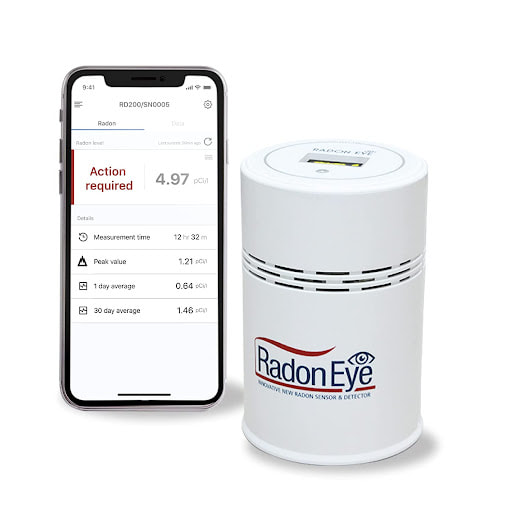

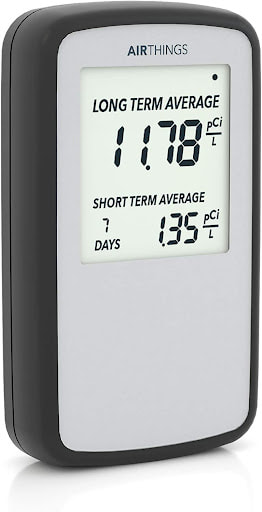
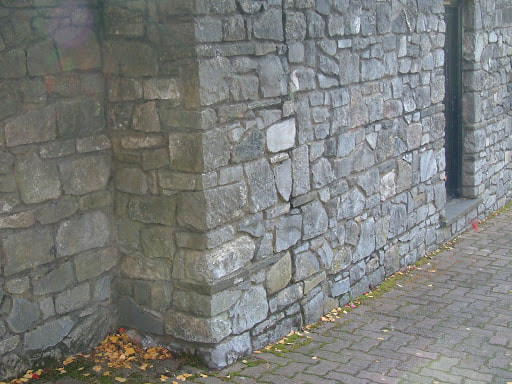
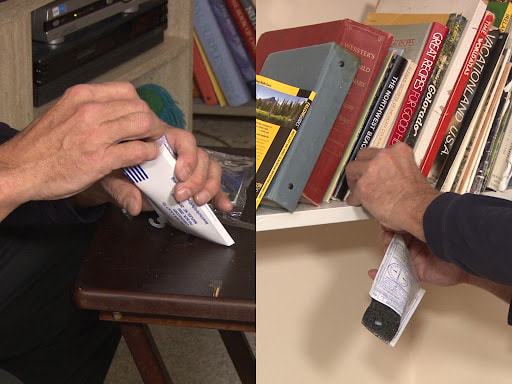
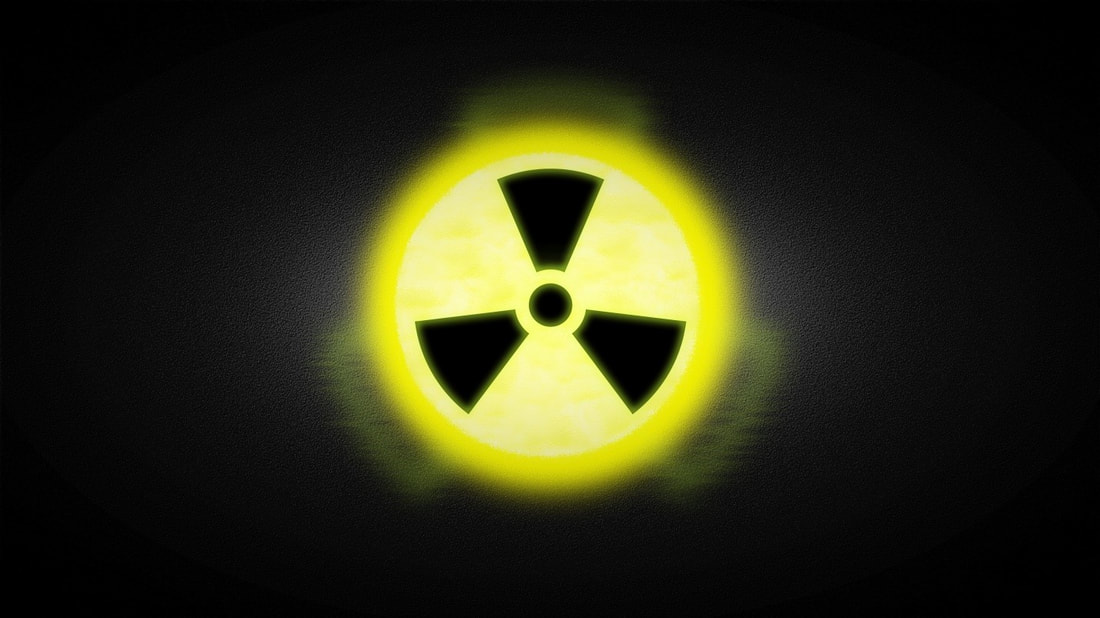
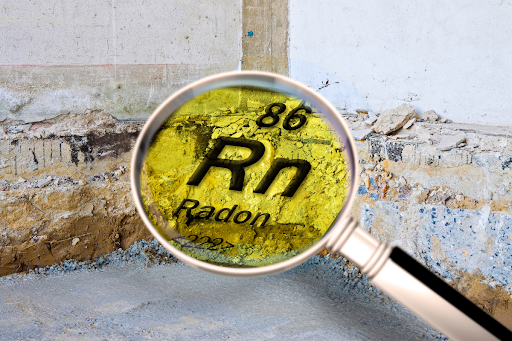
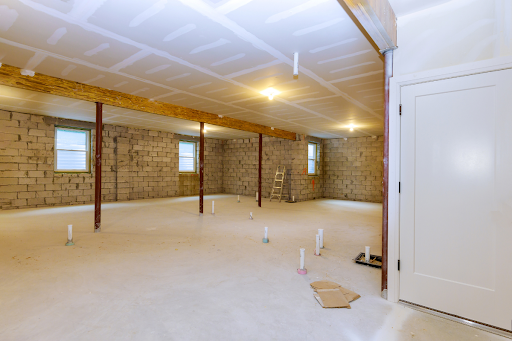
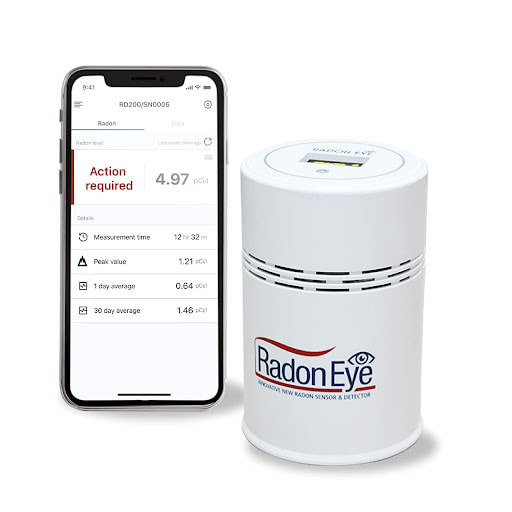
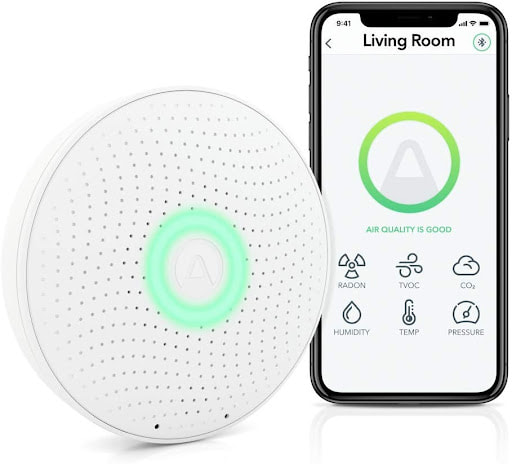
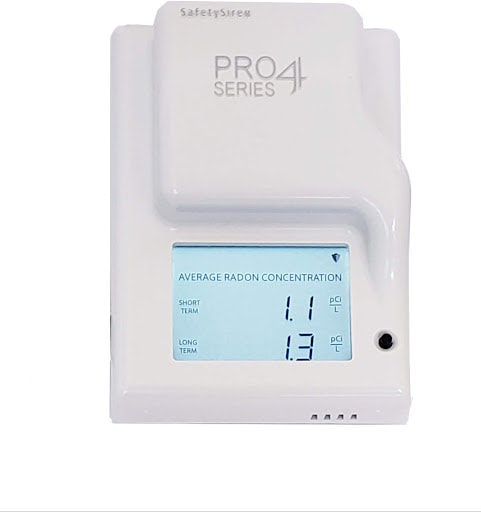
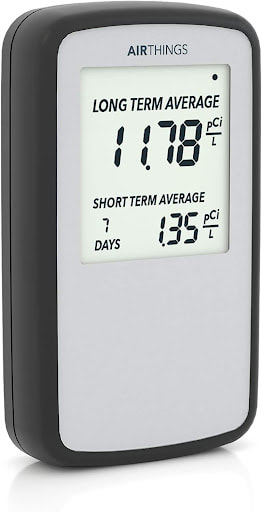
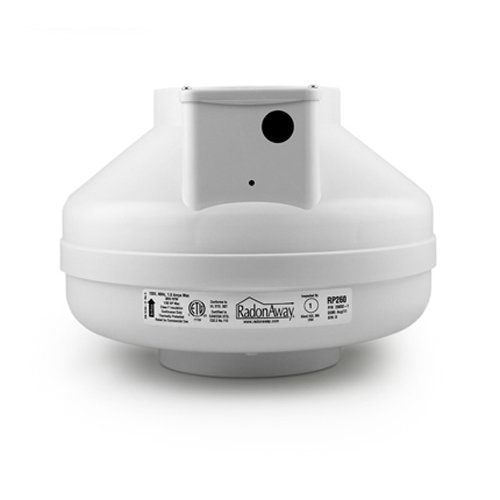
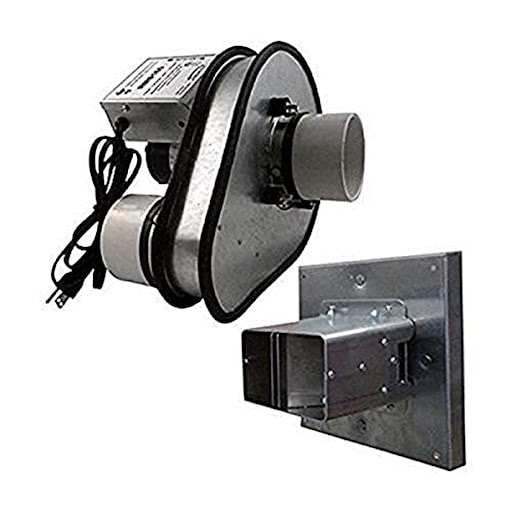
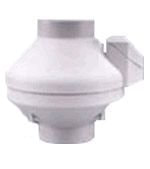
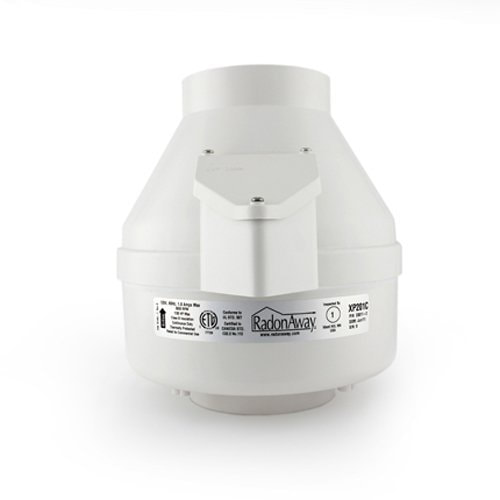
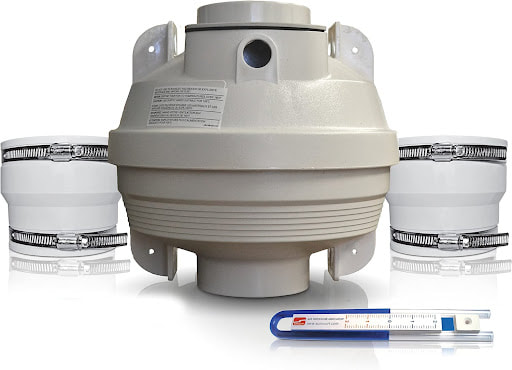
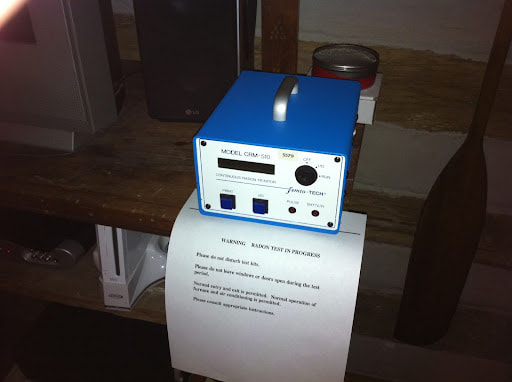

 RSS Feed
RSS Feed
